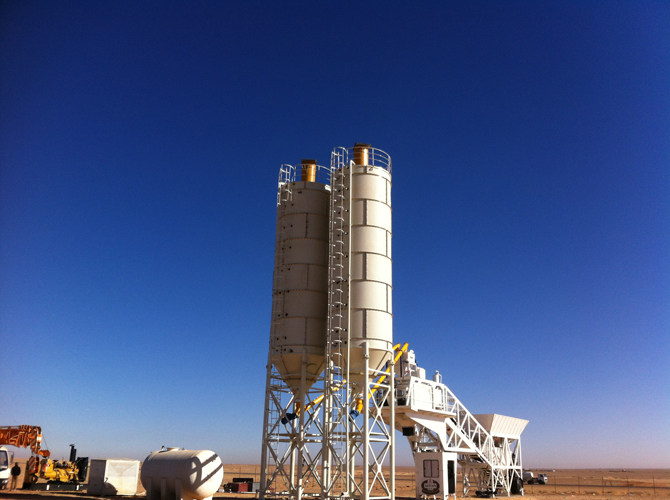Haomei Machinery > Haomei News > Views
To Understand The Characteristics Of Concrete Help You Better Use Mobile Concrete Batching Plant
Writer:Admin Time:15/03/05
Generally speaking, when you pour concrete of mobile concrete batching plant you should check with your city building inspection department to learn what is required in terms of permits and inspections. Since concrete is a perishable product, waiting until the concrete arrives to find out that a permit is required can be an expensive learning experience.

Have a plan. If you are working from a building plan, read the requirements carefully and follow them. If you are working from an idea in your head, commit it to paper, so you can communicate it to others and so you can be clear about what you intend to do.
Form work. Concrete arrives as a flowable liquid. Within 90 minutes of mixing, concrete should be in its final place and waiting for the appropriate finishing steps. While in its liquid form, concrete exerts a huge amount of pressure on its form work. The requirements for form work vary according to the volume of concrete contained by the form and the height of the concrete to portable concrete mixing plant . When it doubt, build form work heavy. It is much easier to build a sturdy form than to attempt to shore up a weak form during a pour, or to clean up after a form has failed in the middle of a pour.
Ground or soil preparation. Concrete should be poured on undisturbed ground when possible. If this isn't possible, pouring on well compacted and well drained subgrade is important. Concrete just 4" deep weighs almost 50 pounds per square foot, so if it is placed on uncompacted fill, the concrete itself will compact the fill, and you may run short.
Determine need for re-enforcement. Concrete is incredibly strong in compression. It takes great force to compress concrete - commonly used exterior mixes typically are able to resist more than 4000 pounds of compressive force per square inch before crushing. However, concrete is not particularly strong in either flexion or tension. If concrete will be subjected to either significant flexion or tension forces, you may need to use steel to re-enforce the concrete. The steel provides the strength to resist tension and flexion.

